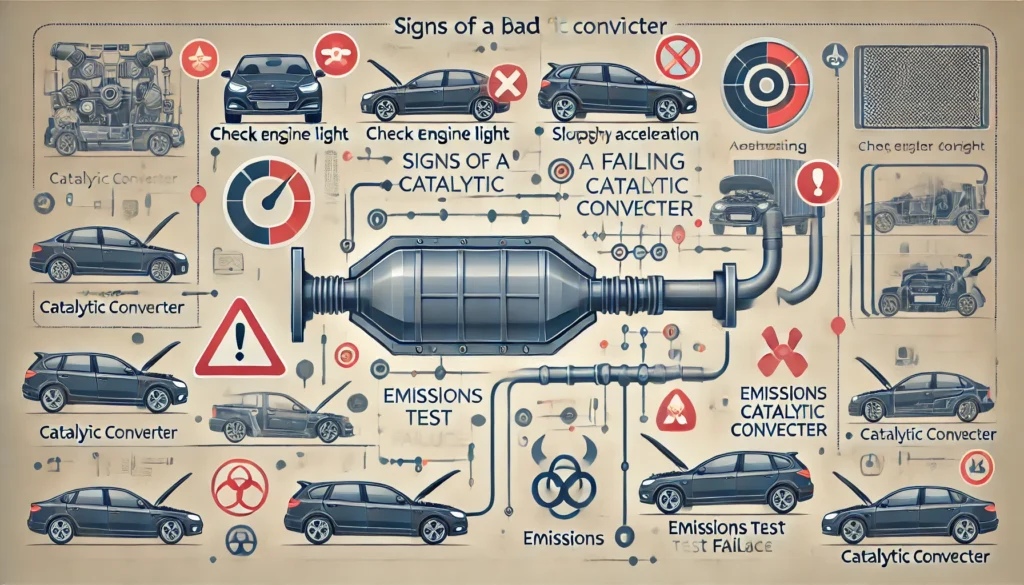The catalytic converter is an essential component of your vehicle’s exhaust system, responsible for reducing harmful emissions. However, when it starts to fail, it can lead to a range of performance issues and even cause your vehicle to fail an emissions test. Knowing how to identify the signs of a bad catalytic converter can help you address the problem before it leads to more severe damage. In this article, we’ll explore how to know if you have a bad catalytic converter and what steps you should take if you suspect an issue.

Signs That Your Catalytic Converter May Be Failing
1. Check Engine Light
One of the most common signs that your catalytic converter may be failing is the illumination of the check engine light on your dashboard. This warning light can be triggered by various issues, but a failing catalytic converter is a frequent culprit. Using an OBD-II scanner can help identify if the problem is indeed related to the catalytic converter.
2. Poor Engine Performance
If your vehicle struggles to accelerate or doesn’t reach its usual top speed, it might be due to a clogged or failing catalytic converter. A bad converter restricts exhaust flow, leading to reduced engine efficiency and performance.
3. Rattling Noise
A rattling noise coming from underneath your vehicle, especially when starting it, could indicate that the internal components of the catalytic converter are damaged or broken. This noise is a clear sign that the converter is not functioning correctly and may need to be replaced.
4. Increased Emissions
A failing catalytic converter can lead to higher levels of harmful emissions. If your vehicle fails an emissions test, it’s a strong indicator that the catalytic converter is not performing its job of reducing pollutants.
5. Decreased Fuel Efficiency
A bad catalytic converter can cause your engine to work harder than necessary, resulting in lower fuel efficiency. If you notice that you’re filling up your gas tank more frequently, it could be due to a problem with the catalytic converter.
How to Diagnose a Bad Catalytic Converter
1. Use an OBD-II Scanner
An OBD-II scanner can read the diagnostic trouble codes (DTCs) from your vehicle’s onboard computer. Codes such as P0420 or P0430 often indicate a problem with the catalytic converter.
2. Perform a Visual Inspection
Visually inspect the catalytic converter for any signs of damage, such as rust, discoloration, or physical damage. A rattling noise may indicate that the internal components are loose or broken.
3. Measure Exhaust Backpressure
Using a backpressure gauge, measure the pressure before and after the catalytic converter. High backpressure suggests that the converter is clogged, restricting the exhaust flow.
4. Temperature Test
A functioning catalytic converter will typically have a higher outlet temperature than the inlet temperature. Use an infrared thermometer to check the temperature before and after the converter. A cooler outlet temperature could indicate a failing converter.
Conclusion
Recognizing the signs of a bad catalytic converter early on can save you from costly repairs and ensure your vehicle runs efficiently. If you suspect your catalytic converter is failing, it’s important to have it inspected by a qualified mechanic to confirm the diagnosis and take the necessary steps to fix or replace the component.
